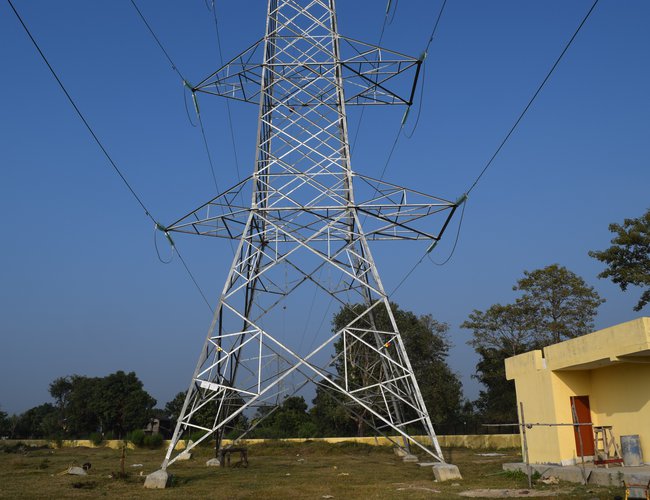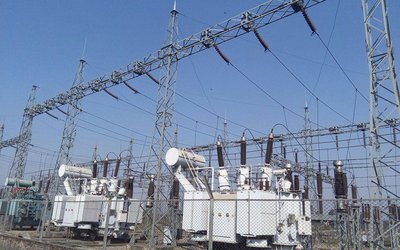
The combined population of BIMSTEC countries exceeds 1.5 billion, which makes the region potentially one of the largest consumers of electricity in the world.The booming economy of the member States, over the recent years, has steadily pushed their energy requirements. But the high consumption of energy has come at an equally high costs, that of air and water pollution from the burning of large quantity of fossil fuels, which have also led torapid deforestation, erosion and contributed to global warming. The emission of carbon and other green-house gases has resulted in poor air quality, melting of ice-caps in the Himalayas and unprecedented health-risks in each of the member States. However, the situation does not have to remain so bleak, when technological breakthroughs and inter-connectedness among economies provide us with sufficient opportunities to collaborate for a better future.
At the moment, the energy market in many BIMSTEC countries is characterized by low per capita consumption, but the demand is increasing along with rapid economic growth. And, given that the world is quickly running out of its limited supply of nonrenewable energy, amid increasing environmental concerns associated with it, BIMSTEC has arrived at a juncture where a decisive step towards investing in renewable energy sources has become essential. Luckily, the options are quite on the brighter side here. BIMSTEC countries Myanmar, Bhutan, Nepal and North Eastpart of India have an immense potential in the form of untapped hydropower. These countries have some of the largest rivers in the world, which flow down from steep Himalayan region and can be harnessed to produce abundant clean and renewable energy. The electricity produced can then be exported to other member countries like Thailand, mainland India and Bangladesh, which have surging demand from booming economy.
Even when we talk about domestic consumption, there is no shortage of demand in countries like Nepal and Myanmar, where the electrification rate is at around 57 percent, the lowest in the region. The growing population and less per-capita energy consumption is indicative of low job creation in the economy, leading to manpower flight in these countries, bruised by many years of conflict. As the countries overcome active phase of conflict and the economy is in resurgence, the demand and consumption of energy will continue to grow.
Besides hydropower, the BIMSTEC region is also blessed with abundant sunlight throughout the year. There is a boundless opportunity of harnessing solar power for renewable energy generation, as technological breakthroughs make costs of tapping energy from this source cheaper by each passing year.Thailand has undoubtedly emerged as a leader in this regard and is showing us the way, with policy changes that have subsidized energy tariffs and significantly brought down costs of solar-components. Although renewable energy remains less than 2 per cent of Thailand's total energy consumption, the production of solar energy has gone from less than 2MW to about 1300MW in 2014 and 3000 MW in 2017.
Securing energy future of the region is crucial to growth of BIMSTEC, but it will require commitment and collaboration among the member States, to create an integrated market which can effectively bring down investment and production costs of renewable energy, through the economies of scale.
BIMSTEC power grid agreement is a kind of a low hanging fruit which encapsules the seed, to the idea of a regional power arrangement. While we are negotiating transmission lines and other major issues, we need to go ahead with discussions regarding policy harmonization and set ourselves a realistic time-frame against achievable milestones. This will require a roadmap for action and decision making in the respective countries. We also have to establish a regulatory arrangement that will ensure consistency and clarity in cross border power trade transactions. Investing in such an energy infrastructure for BIMSTEC region would not only transform economies of the member states, but also bring peace and harmony in the region due to inter-dependence and mutual cooperation. This issue of clean energy cooperation would be taken up seriously among BIMSTEC countries, as we have everything to gain from it and hardly anything to lose.
Energy trade has already proved crucial infostering political and diplomatic relations among member states. Bangladesh's relationship with India and Myanmar'srelationship with Indiaare good cases in point. This relation could be further strengthened by harnessing hydropower in India's Arunachal Pradesh, exporting thus produced electricity to Myanmar, Bangladesh and to rest of India through Bangladesh. Such cooperation produces synergy that is helpful in other bilateral and multi-lateral cooperation.
Energy trade could also be a major area of cooperation among India, Nepal, Bhutan and Bangladesh. Bhutan is currently exporting over 75 per cent of its hydropower generation to India and earning large sum of its revenue. Bangladesh already imports 660 MW of electricity from India and is looking to up that figure to 1000 MW in the coming years. However, the rate at which both of these economies are growing, eventually they will look for more. Unleashing Nepal and Bhutan’s renewable energy potential could then, prove crucial in mutual economic growth of all four neighbors. After India, Bangladesh's plan to invest in hydropower projects in Nepal and Bhutan is indeed an important development in this regard. It is also a win-win situation for the participating countries, because huge investments required for such projects may be a constraint for a sole investor in many cases.
For instance, Indian firm GMR has been struggling to manage huge investment required for ambitious Upper Karnali (900MW) hydroelectric project. If a Bangladeshi company joined hands with GMR to invest in the project, complete it successfully within estimated time and transmit to Bangladesh using Indian transmission system, it will be historic achievement. This is just one among many exciting prospects, mutual and clean energy cooperation among BIMSTEC members could hold.
The deeper integration among BIMISTEC countries through renewable energy cooperation will make us depend more on our own markets for trade and growth. The existence of complementarities in production and exports of renewable energy among BIMISTEC countries holds the potential for a win-win cooperation. In this integration, India will become a gateway to other South Asian economies such as Nepal and Bhutan. Similarly, Bangladesh can become a hub around which infrastructure of the eastern region of South Asia will be realized.
When BIMISTEC countries complement each other perfectly in terms of resource and technology, it will lead to stable and secure energy supplies, which can promote sustainable growth throughout the region. But this will be gradual process, which will require all member states to take the first decisive step in the direction.To begin with, a shift towards the use of low-carbon energy resources and diversification of the energy mix are required to enhance energy security, reduce environmental impacts, especially air pollution, and meet global commitments pertaining to climate change. Addressing these energy challenges must be an integral part of the implementation of the 2030 Agenda for Sustainable Development, including ensuring access to affordable, reliable, sustainable, and modern energy for all.
The vision of a green energy integration will bring great benefits for all participating nations, and boost our collective regional economy. As economic and environmental costs of using fossils fuels get expensive,timely investment and shift towards renewable energy like hydropower and Solar, along with other sources like wind, geothermal and biomass will ensure clean and healthy future for the region. Only a decisive step towards renewable energy can help secure the BIMSTEC region, by preventing problems such as energy shortage and chronic health effects on the population, as well as reducing our carbon foot-prints to fulfill global commitments.
Mr. Rijal is a Senior Economist at Institute for Integrated Development Studies (IIDS) and can be reached at pramodrijal3@gmail.com

















